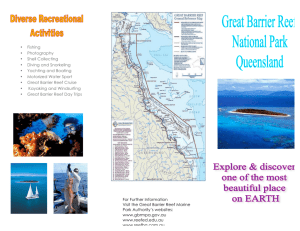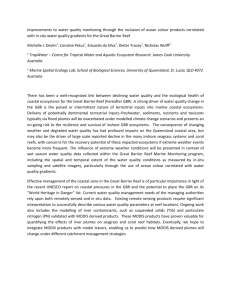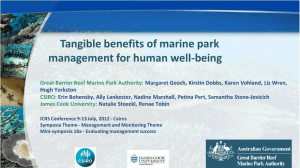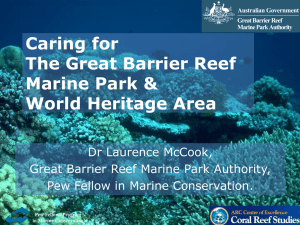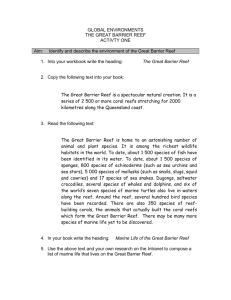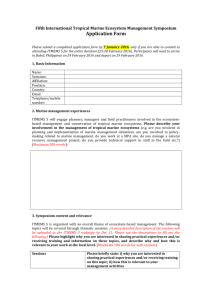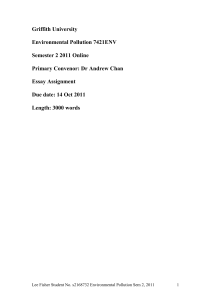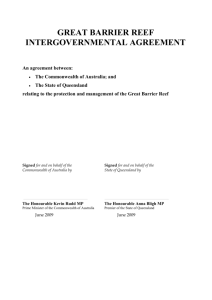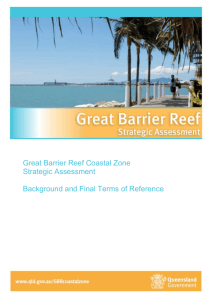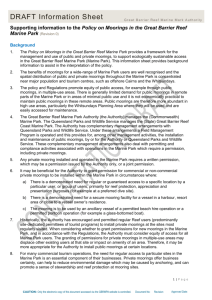There are ongoing concerns about adequate marine
advertisement
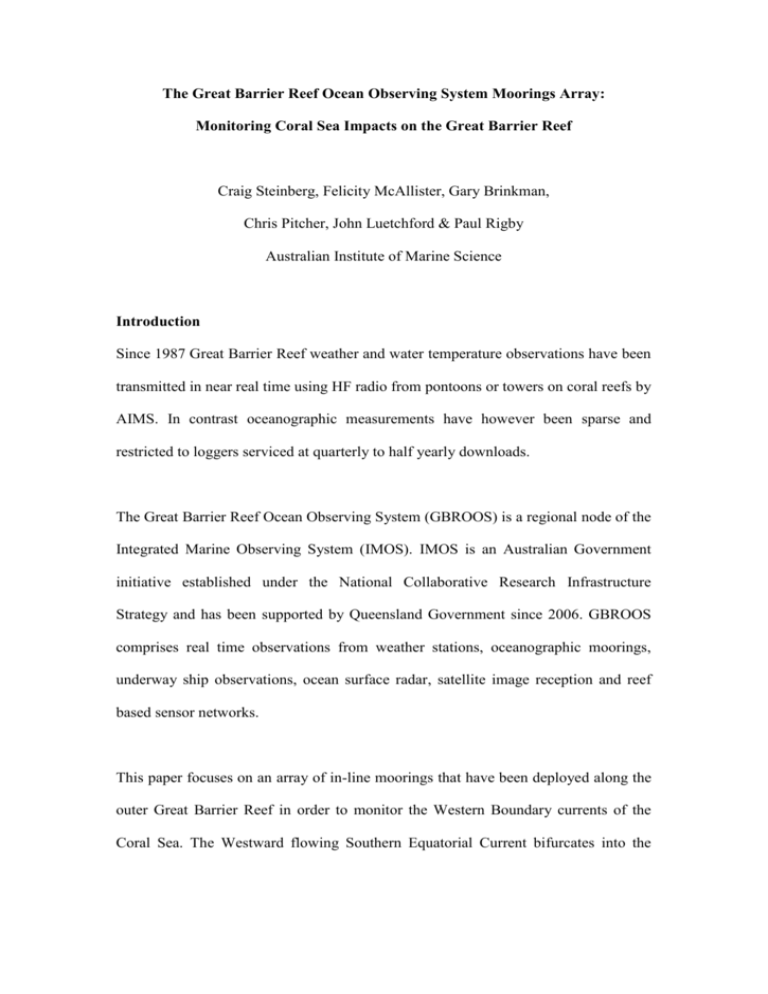
The Great Barrier Reef Ocean Observing System Moorings Array: Monitoring Coral Sea Impacts on the Great Barrier Reef Craig Steinberg, Felicity McAllister, Gary Brinkman, Chris Pitcher, John Luetchford & Paul Rigby Australian Institute of Marine Science Introduction Since 1987 Great Barrier Reef weather and water temperature observations have been transmitted in near real time using HF radio from pontoons or towers on coral reefs by AIMS. In contrast oceanographic measurements have however been sparse and restricted to loggers serviced at quarterly to half yearly downloads. The Great Barrier Reef Ocean Observing System (GBROOS) is a regional node of the Integrated Marine Observing System (IMOS). IMOS is an Australian Government initiative established under the National Collaborative Research Infrastructure Strategy and has been supported by Queensland Government since 2006. GBROOS comprises real time observations from weather stations, oceanographic moorings, underway ship observations, ocean surface radar, satellite image reception and reef based sensor networks. This paper focuses on an array of in-line moorings that have been deployed along the outer Great Barrier Reef in order to monitor the Western Boundary currents of the Coral Sea. The Westward flowing Southern Equatorial Current bifurcates into the poleward flowing East Australian Current and the equatorward North Queensland Current. Mooring Configuration and capability Four mooring pairs span the GBR. They consist of a continental slope mooring, nominally in 200m of water and one on the outer continental shelf within the GBR matrix in depths of 30 to 70m. The array is designed to detect any changes in circulation, temperature response, mixed layer depth and ocean-shelf interactions. Robust and proven instrumentation has been chosen to ensure high quality data streams. Selected Shelf Moorings will have a surface buoy to allow near-real time communications. Surface meteorological measurements will be made with a Vaisala WXT-520 and incoming and outgoing short and long wave radiation will be made by Kipp and Zonen cnr1 radiometers. Together these shall allow the atmosphere and ocean heat exchanges to be observed. Both Shelf and Slope moorings will be configured with pairs of Wetlabs Water Quality Monitors (WQMs). They measure Temperature, Conductivity (Salinity), Pressure, Turbidity, Fluorometry and Dissolved Oxygen. Acoustic Doppler Current Profilers (ADCP) shall provide time series of water currents of shelf waters and the upper 200m of the slope waters Conclusions Since 2007 new streams of high quality current meter and water quality measurements have been collected over the breadth of the GBR. During 2009 the capability will be enhanced by adding additional sensors including meteorological data. Near-real time data delivery via the IMOS data portal will become progressively available later in the year. A review of likely impacts of climate change on the physical oceanography of the GBR is providing a basis upon which to explore what processes may be affected by climate change (Steinberg 2007). Acknowledgements GBROOS is a regional node of Australia’s Integrated Marine Observing System (IMOS) - an initiative of the Australian Government being conducted as part of the National Collaborative Research Infrastructure Strategy, the Australian Institute of Marine Science and supported by the Queensland State Government. The support of the Tropical Marine Network (University of Sydney, Australian Museum, University of Queensland and James Cook University) who run research stations at One Tree, Lizard, Heron and Orpheus Islands, respectively, on the GBR is also acknowledged. References Integrated Marine Observing System web site: http://www.imos.org.au Australian Institute of Marine Science web site: http://www.aims.gov.au Lynch, T.P et al (2008) A National Reference Station infrastructure for Australia – using telemetry and central processing to report multi-disciplinary data streams for monitoring marine ecosystem response to climate change. Oceans 2008 MTS IEE Oceans, Poles and Climate: Technological Challenges. Quebec City, Canada, 15-18 September 2008. Steinberg C (2007) Impacts of climate change on the physical oceanography of the Great Barrier Reef. Chapter 3, Climate Change and the Great Barrier Reef, eds. Johnson JE and Marshall PA. Great Barrier Reef Marine Park Authority & Australian Greenhouse Office, pp 51-74. Fig. 1 Mooring Designs for the real time shelf (left) and delayed mode slope (right). Fig. 2 Sample time series data of wind stress, sea level and temperature loggers located on a mooring at depths of 13, 17, 27 and 44m in the Southern GBR. Cold water bottom intrusions causing water column stratification are evident, interrupted by a strong wind forced mixing event on September 25, 2008.
